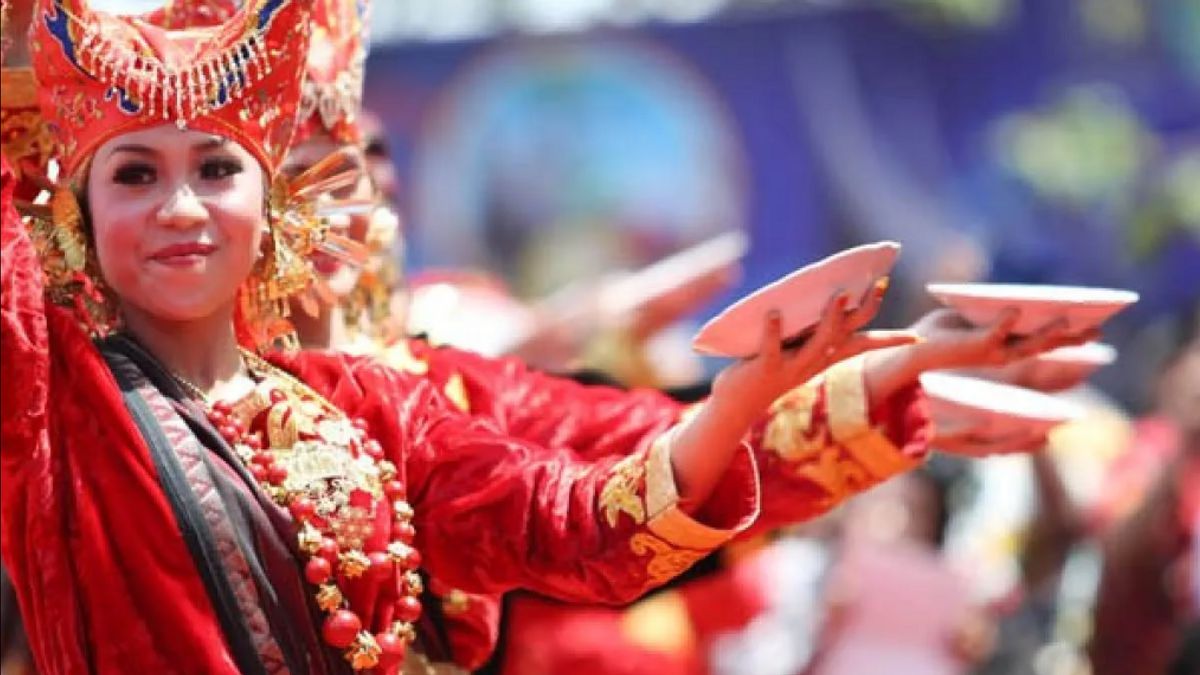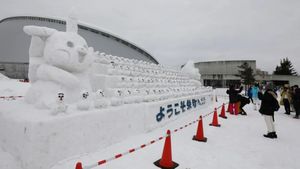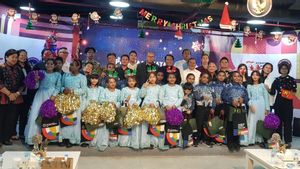YOGYAKARTA - Plate dance is one of the iconic dances of Indonesian culture. Plate dance is one of the traditional dances preserved by the Minangkabau Tribe in West Sumatra. As the name suggests, this dance is performed with dancers holding plates while competing.
The plate dance performance wowed the audience because it not only looks beautiful, but also like an attraction. The dancers can move in rhythm and attractively while carrying plates without being released. Even the movement in this dance requires the dancers to act agilely and quickly, and comes from the steps of Minangkabau's typical Chinese martial arts.
The appearance of plate dances is usually held for honorable guest welcoming events and ceremonies such as weddings, religions, and parties. With its aesthetic value and uniqueness, this dance attracts many tourists and is often displayed at foreign arts festivals abroad. So what is the history of the origin and characteristics of the plate dance that need to be seen further?
Plate dance is a traditional dance from Solok, West Sumatra. According to legends, this dance originally served in fertility ceremonies as an expression of gratitude to the gods after the harvest was abundant. This dance not only has high aesthetic value, but also contains deep ancestral cultural values.
In the show, the dancers carry plates and move dynamically while carrying offerings in the form of food on the plate. The movements in the Piring Dance have a symbolic meaning that reflects the values of Minangkabau's life and culture.
After Islam entered Minangkabau, the Piring Dance was no longer used as a thanksgiving ritual to the gods. Even so, this dance remains an important part of Minangkabau traditional culture and art. In addition, this dance is also used as entertainment in various crowded events.
The plate dance is still performed solemnly and with great gratitude and pride for the cultural wealth and local wisdom of the Minangkabau people. This dance is a symbol of the beauty and richness of Indonesian culture that needs to be preserved and maintained for future generations.
For many people, plate dance is familiar or knows it because it is synonymous with the movement to carry plates. But in addition, plate dance has many other characteristics that make this dance attractive and has special value.
Plate dances have their own characteristics of the movements, musical instruments, and properties used. The following are a number of characteristics of plate dances and their respective meanings that need to be understood:
The number of dancers in the plate dance is usually odd, consisting of three to seven people. They wore bright clothes with red and golden yellow and head coverings.
The dancers put two plates on their palms and make quick movements while pinting plates or two rings on their fingers on the plates they carry. The movement in the Piring Dance was inspired by various movements, such as the basic movement of pencak silat, the banyakjet movement, the bagaluik squirrel movement, the kombang bungo movement, and others.
The plate dance movement is accompanied by talempong and saluang music. The movement carried out by the dancer begins with a soft and regular tempo, then gradually becomes faster. At the end of the dance, the dancer threw the plates on the floor and danced on the broken plate.
In addition, plate dance also involves movements that describe the activities of people's lives in the area, such as: bacamin movement, basic movement, children's budai movement, suto mangompuan movement, masinyah movement, piriang ma'i-timption movement, bagolek movement, manyemba lalok movement.
The musical instrument used in the Piring Dance is talempong pacik, a musical instrument typical of Minangkabau which is made from a mixture of copper and kuning. Talempong pacik is divided into three types, namely male talempong, female talempong, and pangawin talempong.
In addition, this dance also includes other musical instruments as an accompaniment, namely pupuik rice stems, this tool is in the form of a single-tone instrument that has been modified to produce a unique rhythm. Gandang or drums in Minang also added to perform dance accompaniment. Although the shape is the same as general drums, the way to hit it varies depending on the type of song snatch.
SEE ALSO:
Another characteristic that makes this dance interesting is the property used. In addition to using the main property in the form of plates, this dance also uses other properties as follows, namely damar and pencak silat costumes.
Another property in the Piring Dance is damar. This Damar is perforated so that the middle fingers of the right and left hands can be put into the hole. During dancing, damar is knocked onto the plate following the rhythm of the music, making the plate dance even more lively.
The Piring Dance costume used to be similar to the black pencak silat costume. However, to add to the excitement, the plate dance costume now has various colors. This special costume is called a bracket shirt made of fire or satin with floral motifs. In addition, the dancers also wore a codic cloth similar to a sarong.
That is a review of the history of origin and characteristics of plate dance which is important to recognize as cultural insight. This Minangkabau typical dance not only captivates the eyes through the beauty of its movement, but also contains noble values in every characteristic. Also read traditional dances from Bali.
Stay up to date with the latest domestic and other overseas news on VOI. We present the latest and updated information nationally and internationally.
The English, Chinese, Japanese, Arabic, and French versions are automatically generated by the AI. So there may still be inaccuracies in translating, please always see Indonesian as our main language. (system supported by DigitalSiber.id)



















